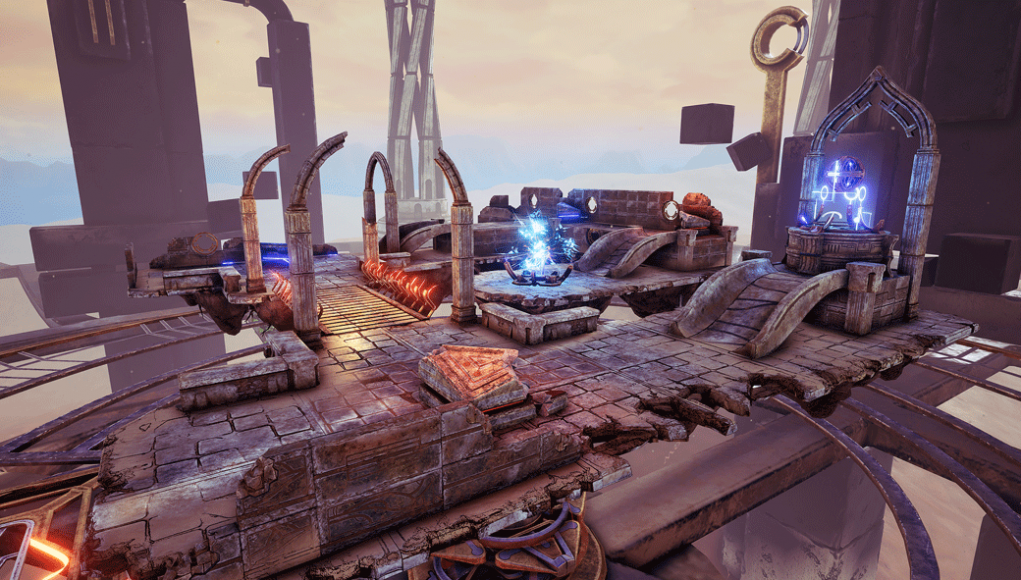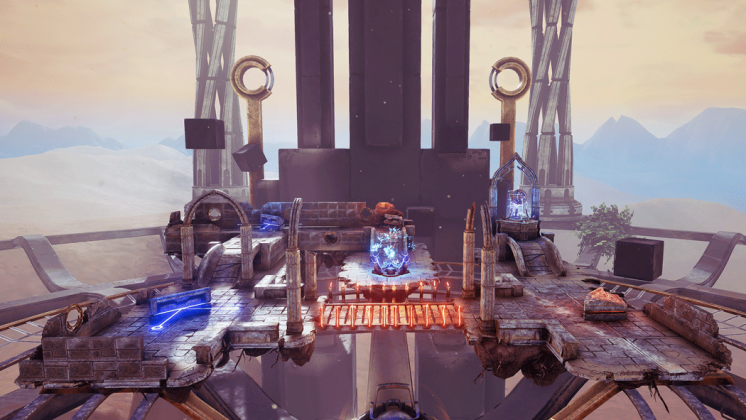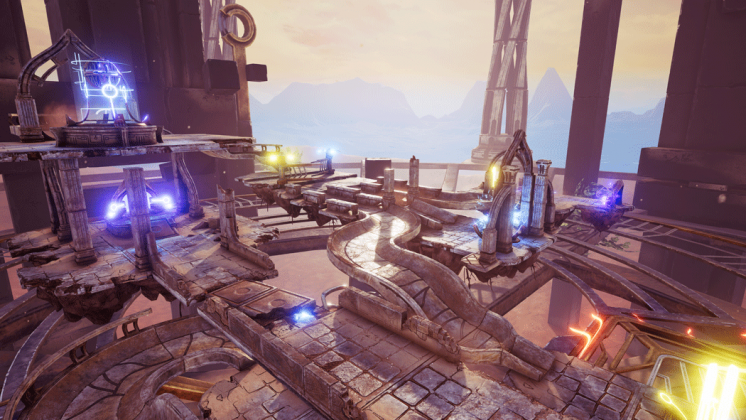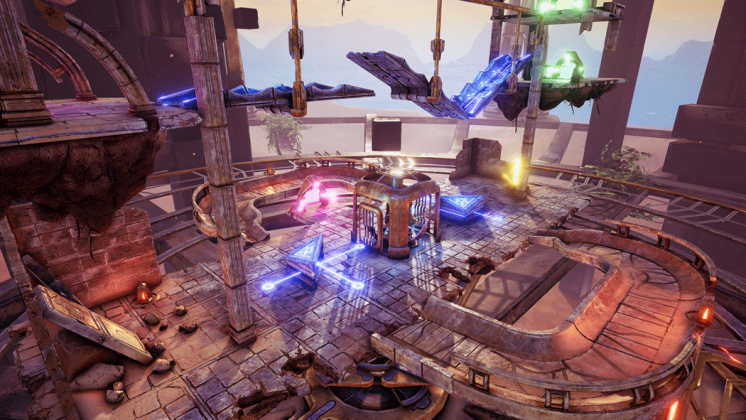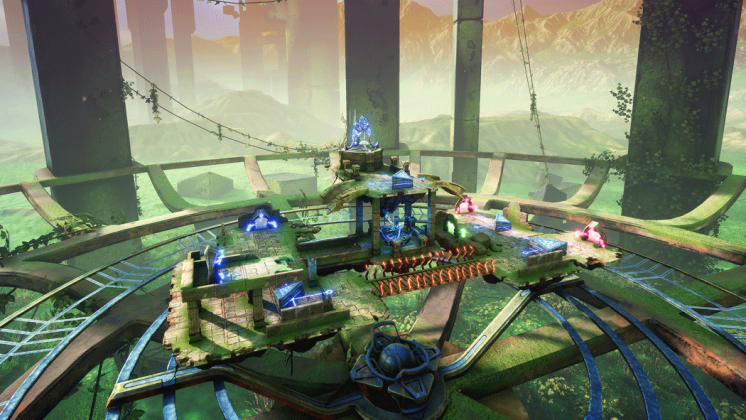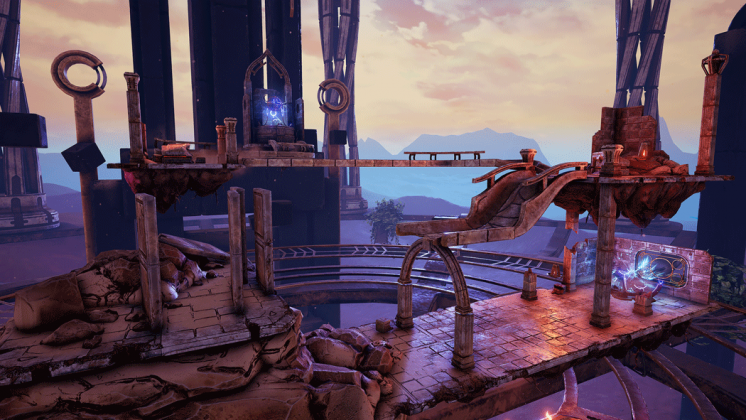Marble Land is a physics-based puzzle game from Devious Technologies, a Bucharest, Romania based studio. We got a chance at this year’s Gamescom to pop into the unique little puzzler, which is slated to launch in the next few months on HTC Vive, Oculus Rift, PlayStation VR, Samsung Gear VR and Google Daydream.
I remember playing a prototype version of Marble Land when it was first released in mid-2016 on wearvr, the repository for all things virtual. Standing out among the cadre of low-effort wave shooters and overblown school projects was a gem of a demo that incorporated complex, physics-based puzzles.
Strapping into an Oculus Rift with Touch controllers, the busy show floor faded to the back of my mind as I was transported to an antique, but plainly alien-look environment. With the puzzle at the center of the strange building placed around me, I began to focus at the task at hand. The objective: guide an the ethereal blue marble into the green target area by using the world’s Rube Goldberg-inspired devices. With no time limit or point structure, your only goal is to complete the level and move on to the next.
I guided the ball through everything from simple pathways to weird transport gates, some of which could only be activated by changing the direction of barriers scattered throughout the level that would allow the marble to go one way or another. I went through 5 newly-created levels (the prototype levels have been scrapped entirely), each more complex than the last. None of them were particularly tough to figure out, but I definitely perceived the gradual ramping up in difficulty level with each marble I successfully got in the goal. According to Devious Technologies, 45 levels will be available at launch, but more will come in subsequent updates.
When seated, virtual locomotion was my least favorite part of Marble Land. It’s basically a very slow first-person smooth-turning mechanic using the joy sticks for forward-back and up-down motion. While it was slow enough not to cause any nausea, I would have appreciated a quicker way to reposition myself. The game also offers room-scale support, which makes it a little easier to naturally walk around the little puzzle to get a better view.
Visually, Marble Land looks super interesting, combing a weird melange of futuristic and ancient in both puzzle and surrounding environment.
Inquiring about the possibility of a level editor, studio founder George Cristian Tudor told me that Oculus (for example) is very stringent on games maintaining a minimum of 90 fps, and that the addition of a level editor, which allows you carte blanche to rig up complex physics-based interactions, would only really be possible as a mod released after the initial launch.
Marble Land will be available sometime in the second half of 2017 on VR headsets and traditional monitors.

